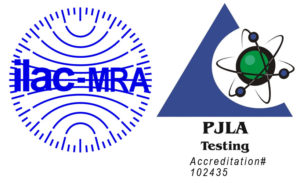A Practical Guide for Heart Valve Manufacturers and Testing Laboratories
Heart Valve Testers are complex instruments and investing in these units can be expensive, time consuming and fraught with risk. This buyer’s guide provides both technical information that pertains to these devices, as well as the regulatory framework within which they are used. The key to choosing the right heart valve tester is making sure that the tester features the right technology to thoroughly test your heart valve or cardiac device for durability and fatigue, meets performance criteria as mandated by AAMI/ISO/FDA regulations, and does so in the most cost-effective manner.
But where do you begin? Regulatory agencies do not provide information or direction as to which heart valve tester is the best, and every vendor of these units says they’re ‘compliant’ with various regulations. Equally vexing, there is a dearth of specific technical information about heart valve testers that makes it difficult, if not impossible, for a potential buyer to compare and evaluate these units on a level playing field. A review of product brochures and specifications shows that manufacturers not only omit significant product data from their published literature, they often tend to use meaningless technical jargon to promote their product.
This guide shows you how to evaluate heart valve testers and select the right one for your application. Asking the right questions will uncover design features in the unit you are evaluating, and the answers will provide you with the data to make informed decisions. Budgets are routinely tight, and startups and small companies tend to make decisions based on the product’s sale price. Very often they find that the savings they got upfront have evaporated when the device breaks down after a few months or a year or two of rigorous testing, setting back their device testing timelines with potentially disastrous financial consequences. Oftentimes, the user doesn’t even know that the heart valve tester is giving them poor test results before it actually breaks down. So if you’re testing heart valves or cardiac devices, the following questions will help you cut through the maze of confusing and often contradictory information and lead you to the correct heart valve tester for your needs.
Q1 Does the unit have ‘independently tuned’ test valves or do all valves undergo identical hydrodynamic loading conditions during testing as required by regulations?
Section 7.2.4.1 of ISO/AAMI 5840-3:2013 states: One equivalent size reference valve shall be tested under identical hydrodynamic loading conditions for each valve size tested. This standard thus does not allow for ‘independently tuned’ test valves in testers offered by some vendors, where the hydrodynamic conditions for each valve are independently adjusted and set manually, and could both theoretically and practically result in different load conditions for the valves undergoing testing. Testers that offer independently tuned test valves are thus not compliant with this requirement in ISO/AAMI 5840.
Testers that feature identical hydrodynamic loading conditions, for example those offering tuned fluid oscillation, are capable of testing valves under identical hydrodynamic loading conditions as required by ISO/AAMI 5840.
With testers offering tuned fluid oscillation, as the motor shaft turns, an adjustable tilting coupler rotates and pulls the swash plate down, extending the bellows. The swash plate is a metal plate that forms the base on which all the metal bellows are mounted and allow all six valves with their respective bellows to remain in a continuous fluid contact loop, thus providing for identical hydrodynamic loading conditions for all valves. The swash plate obviates the need for manually adjusting each test section with flow restrictors, as required in testers that feature ‘independently tuned’ test valves.
When the swash plate moves downward, it draws fluid down into the proprietary coated metal bellows through the now opened valve being tested. Thus the swash plate offers the ability to ensure that the test valve is in fully open condition. As the motor rotation continues, the swash plate is returned upward, compressing the metal bellows, causing the fluid to reverse direction and fully close the valve. Further bellows compression increases the pressure behind the valve, loading the leaflets or occluders. Fluid now escapes through the bypass port, through the throttle valve and into the central reservoir where it is then available to the upper head above the valves for another cycle. Closing pressure is a function of motor speed, swash plate deflection, and throttle position.
Q2 Can the unit independently control forward flow and closing pressure?
In testers that feature independently tuned test sections, each test section is fluidically isolated from every other section, i.e., fluid from one section does not flow into another test section. Thus, when the user adjusts the flow to ensure that the valve opens fully, there may not be enough fluid in the test section to ensure that the targeted transvalvular closing pressure is reached. Alternatively, if the closing pressure is too high, then reducing forward flow through the valve (‘starving’ the valve) can result in less than full opening of the valve.
Testers that feature tuned fluid oscillation, on the other hand, have two unique features that allow them to get around the ‘starved valve’ problem. Firstly, these testers feature test sections that are all part of a closed fluid loop that is connected to a central fluid reservoir. This results in identical fluid dynamics delivered to each valve. In a sequentially pressurized heart valve tester, the failure of a heart valve in one chamber does not lead to pressure fluctuations in other test chambers or worse, the shutdown of the whole unit.
Secondly, on the upstroke, when the valve is undergoing full closure, in the event there is excess fluid per cycle, the fluid escapes through the bypass port, through the throttle valve and into the central reservoir where it is available for another cycle.
Q3 How does the user control system pressure on the heart valve tester?
There are broadly two ways of controlling system pressure in a heart valve tester:
a. Furnishing the unit with a tall column of water or other fluid to create a ‘head’ of pressure, or
b. A capacitance tank directly connected to the tester’s chambers.
A column of water 12” tall exerts a pressure of 0.433 psi. To increase pressure, one needs to increase the water level in such a system by adding water until the desired pressure is reached; this process is inconvenient and slow. Targeting an accurate system pressure using a column of fluid is very difficult and rapid changes are close to impossible to make. Moreover, to get pressures as high as 7 psi in the system (desirable to decrease the possibility of cavitation), you would need a column of water that is 16 feet tall! Since such a column would be impractical, heart valve testers that use a fluid column to regulate pressure have very low system pressures.
Heart valve testers that utilize a capacitance tank to set the system pressure are easy to use. A pressure display on the unit’s controller shows the current system pressure and raising or lowering the system pressure is as easy as keying in the new pressure value on the unit’s controller. Such units allow the user to raise or lower the system pressure accurately even while the test is in progress. In cases where one needs to prevent cavitation from harming the heart valve components, (such as with a mechanical valve), the ability to use a higher system pressure is critical.
Q4 Is the heart valve tester a closed or open system?
Heart valve testers can be ‘closed’ or ‘open,’ depending on whether they are closed from ambient air or not. If a system is open to ambient air, it is vulnerable to bacterial and chemical contamination. Although heart valve testing is routinely done with antibiotics in the test fluid, the constant threat of contamination is a weakness in units that control system pressure with a column of water. Such columns are by design ‘open’ to ambient air and are the singular design flaw that can lead to system contamination.
Closed systems are ‘closed’ off from ambient air and the incidence of contamination is considerably reduced. The use of appropriate antibiotics with such closed systems is normally sufficient to control any bacterial contamination, and chemical contamination from ambient air is virtually eliminated.
In closed systems where system pressure is regulated with a capacitance tank, the high positive pressure maintained inside the system ensures that even if there were a leak in the system, air or fluid from inside the system would leak out, rather than allow contaminants into the system.
Q5 Is valve prolapse a known problem with the tester?
In heart valve testers where fluid moves through the test chamber containing the test heart valve, the fluid alone causes valve closure. When the valve closes, any excess fluid being pumped in is diverted into a ‘bypass’ channel, to ensure that the leaflets do not prolapse. Valve inversion is not seen in these circumstances because excess fluid is diverted.
In heart valve testers where the test chamber moves through the test fluid, it is the upward or downward movement of the entire test chamber that causes the valve to close. At certain speeds, the test chamber is moving so fast that the fluid behind it has not ‘caught up’ with the test chamber, resulting in a transient drop in pressure in that region, causing the valve to open wide or undergo ‘inversion,’ resulting in a fully opened valve, instead of a fully closed valve. The vendors that make these units are aware of this inversion problem, and even have adaptors that they claim address this design flaw, but the adaptors are not a perfect solution to valve inversion.
Q6 Does the unit pull a vacuum on the test valves?
In testers where the valve itself moves up and down at the end of a piston, and each test valve is located in an independent closed test section, the sharp turnaround in the movement of the test valve from the upstroke to the downstroke leads to a pressure drop, so that valve closure is not obtained at zero pressure, but rather at pressures in the range of -80 to -200 mm Hg.
Transvalvular pressures in such testers also remain predominantly in the sub-zero pressure range almost entirely. Such pressure ranges are not advisable for two reasons:
a. Such pressure ranges are not found in vivo
b. Negative pressures such as these result in cavitation with mechanical valves and possible tearing of leaflet valves
On the other hand, in testers that offer tuned fluid oscillation, the entire pressure regime (forward flow, closing pressure and transvalve) is located above zero pressure, and a vacuum is not imposed on valves, reducing the possibility of nonbiologically relevant cavitation with mechanical valves and tearing with leaflet valves. Tuned fluid oscillation testers are able to accomplish continuous positive pressure cycles across the full open-close cycle by offering the user the ability to raise the systemic pressure for the whole unit.
Q7 What is the maximum working height of a valve section that the unit can test?
Valves are designed with a variety of custom requirements. Some vendors have an upper limit of about 5 cm on the maximum height of the valve section, since their unit operates on a fixed length piston arm. In testers where the test valve does not move, there is no such restriction on test section heights, and test sections of all heights can be accommodated.
Q8 What are the long-term maintenance costs of the tester?
The more moving parts there are in a system, the greater the maintenance costs of that system. In heart valve testers where the test chamber is being driven through the test fluid like a piston, the system includes many moving parts like gears, sliding seals, and piston arms. These systems are also prone to vibration due to the reciprocating nature of the piston system, especially at the high speeds encountered during accelerated wear testing. Such testers have significantly higher maintenance costs due to the larger number of moving parts.
Moreover, such testers are vulnerable to breakdown if the required preventive maintenance procedures have not been diligently carried out prior to a long-term durability test that can often run into many months.
On the other hand, heart valve testers where the test fluid flows through the test chamber require little to no routine maintenance. This is because such testers have significantly fewer moving parts that require any attention, offering peace of mind and long-term reliability.
In the heart valve tester market today, testers that have more moving parts are generally 25-30% heavier than their counterparts that have fewer moving parts.
The M6 has a 30 year history and most that were sold are still operating. It is suggested that some part replacement should be done after each billion cycles of use.
Q9 How well does the heart valve tester support visualization of valve performance?
ISO 5840 mandates visual observation of the test valve at regular and frequent intervals such as daily or weekly. When evaluating a heart valve tester, ensure that you can see as much of the test valve as possible, including sutures, leaflets, occluders, fabric, etc. Some testers have their test chambers shrouded in metal structures, significantly impairing test valve observation as well as photography of the valve.
In testers where the test chamber is reciprocating or moving up and down at high speeds, visually following the performance of a test valve located inside a test chamber that is itself moving up and down becomes difficult if not impossible.
A tester that allows the user to invert the whole test chamber to allow visualization of the underside of certain kinds of heart valves is a significant advantage; this is not to be confused with ‘valve inversion’ in Question 4 above, which is a significant disadvantage! The performance of certain heart valves such as trileaflet valves can be better visualized when the test chamber in which the valve is mounted is inverted. This allows the user to better observe the valve commissures, sutures and the edges of the lobes when the valve closes. The ability to invert a test chamber also helps eliminate small air bubbles that may be trapped in the upper corners of a lobed leaflet valve.
Units that have their ‘upper head’ made of clear acrylic or polycarbonate to allow clear visualization of the test valves are the better choices to meet the ISO 5840 visualization requirement.
Q10 Are the bellows made of metal or rubber?
Heart valve testers usually feature bellows made of metal or rubber. Bellows may be used either to accomplish pulsatile fluid flow into the test chamber or they may be used as reservoirs to contain test fluid that ‘leaks’ back through the seal around the piston rod. In either case, choose metal bellows for long life, durability and virtually maintenance-free use.
Q11 Does the heart valve tester feature high-performance pressure transducers?
The fluid in a test chamber in a heart valve tester is a dynamic pressure environment, i.e., pressures can change rapidly. Pressure transducers with a high ‘natural or resonant frequency’ can respond very quickly with a high degree of sensitivity to such frequent pressure changes.
Some heart valve testers feature low-cost, disposable transducers, originally designed for bedside patient monitoring. These disposable transducers were found to have resonant frequencies of around 200 Hz. A rule of thumb for pressure transducers states that the frequency-measuring limit for transducers is 10% of the resonant frequency. This would mean that their actual measuring limit would be only 20 Hz, based on the 10% rule. Such transducers could be a limiting factor in measuring real-time pressure values in test chambers, since ASTM and ISO standards require the sampling frequency to be at least 50 times the frequency of the spike.
High-performance pressure transducers can offer resonant frequencies of up to 180,000 Hz. Based on the 10% rule, the frequency-measuring limit for such transducers is 18,000 Hz. This high frequency ensures that the transducer can easily measure the entire range of transient pressures found in the test chambers.
Q12 What has been the track record of the tester?
When evaluating a heart valve tester, ask the vendor how long they have been selling that model in the market. Some testers are no longer being manufactured, while others have been around for only a few years. A tester that has been in the market for over 30 years and has been purchased by most major heart valve manufacturers in the world is head and shoulders above the rest of the pack and will give you the most reliable and cost-effective heart valve testing platform that you can get!
Q13 What is the warranty on the tester?
Most heart valve testers on the market today have a standard one-year warranty. There are testers with longer warranty periods and at least one with a 10-year warranty. A longer warranty period makes for a compelling reason to purchase, especially when downtime is expensive in the heart valve testing business.



